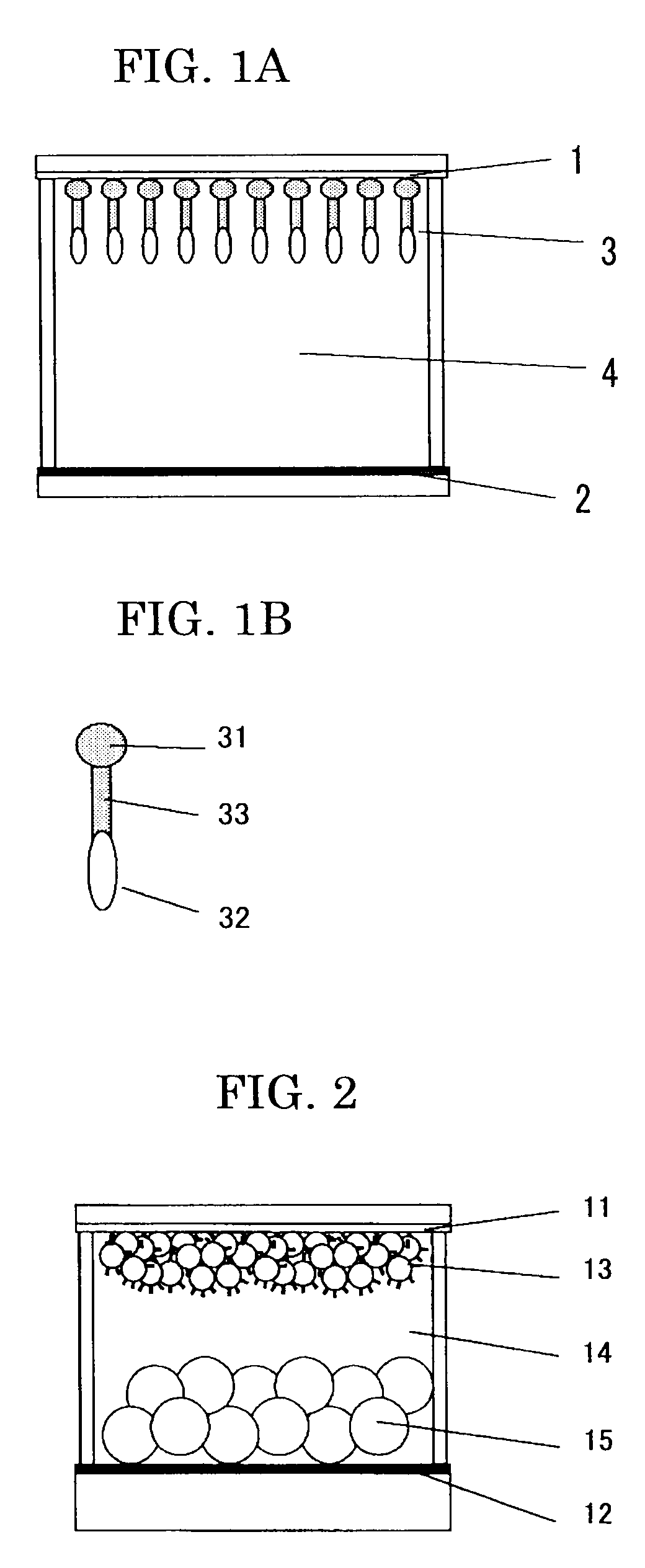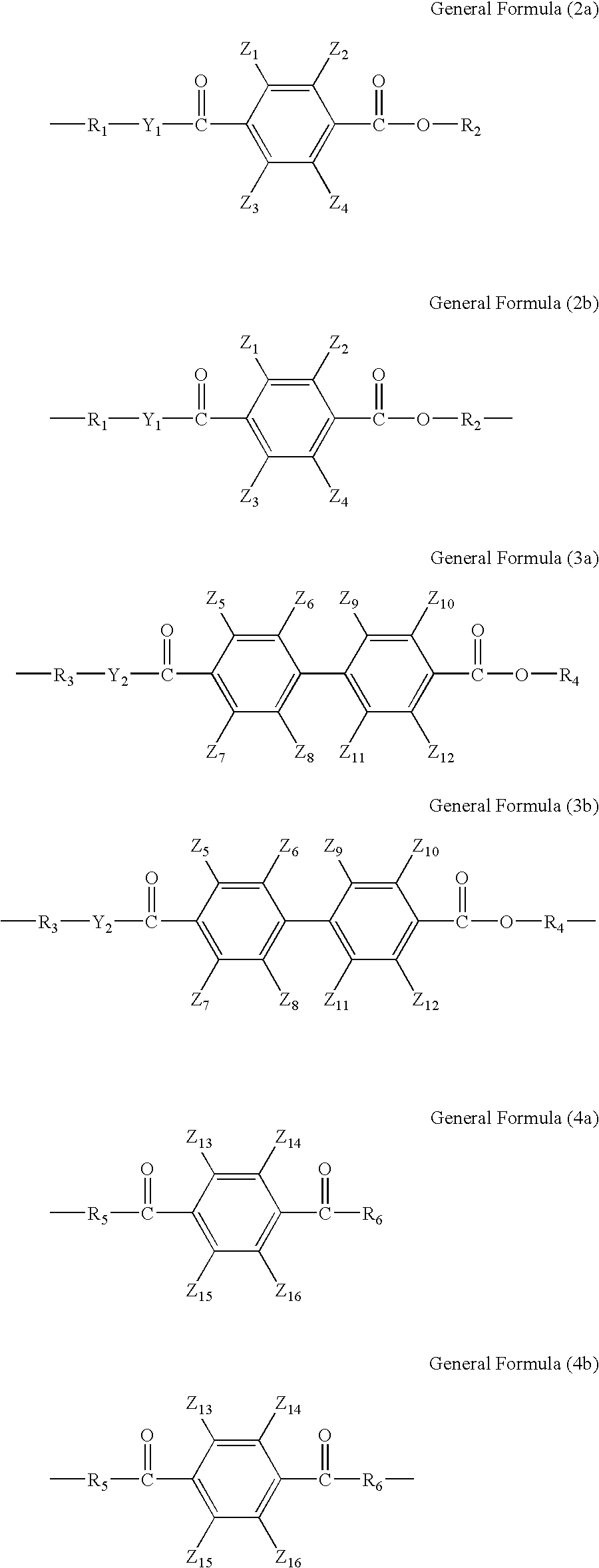Electrochromic compound and electrochromic display device using the same
a display device and electrochromic compound technology, applied in the field of display devices, can solve the problems of low light utilization efficiency, low contrast ratio, and difficult development of display devices offering all of these characteristics
- Summary
- Abstract
- Description
- Claims
- Application Information
AI Technical Summary
Benefits of technology
Problems solved by technology
Method used
Image
Examples
example 1
1) Display Electrode
[0052]0.2 M of Compound No. 11 was dissolved in a mixed solvent of methanol and isopropanol. In the resultant solution, a glass substrate whose whole surface was covered with tin oxide transparent electrode film was immersed for 24 hours to allow Compound No. 11 to adsorb on the surface of the electrode, whereby a display electrode was produced.
2) Counter Electrode
[0053]10 g of titanium oxide (a white pigment) was mixed with 10% methylethylketone solution (10 g) of acryl resin, and the mixture was dispersed for 1 hour with 2 mm zirconia beads (50 g) using a ball mill. The resultant dispersion liquid was applied on a zinc substrate, whereby a counter electrode having a white reflective layer thereon was obtained.
3) Electrochromic Device
[0054]A spacer having a thickness of 100 μm was placed between the transparent display electrode obtained in 1) and the counter electrode obtained in 2) such that the two electrodes face each other across the spacer. Into the vacant...
example 2
[0056]An electrochromic display device was prepared in the same way as in Example 1, except that a display electrode was prepared in the following manner.
1) Display Electrode
[0057]On a transparent electrode formed by coating tin oxide on a glass substrate, a 20% by mass dispersion liquid of titanium oxide having an average particle diameter of 6 nm was applied with a spin coat method, followed by sintering at 400° C. for 1 hour. The sintered substrate was then immersed for 24 hours into a 0.02 M solution of Compound No. 12 in a mixed solvent of methanol and isopropanol to obtain a substrate having an electrochromic composition in which Compound No. 12 was adsorbed on titanium oxide. Then the substrate was washed and dried to thereby yield a display electrode.
[0058]In a display device having the display electrode and a counter electrode, the display electrode and the counter electrode were respectively connected to anode and cathode and applied a voltage of 2.5 V for 1 second, whereb...
example 3
[0059]An electrochromic display device was prepared in the same way as in Example 2, except that Compound No. 12 was changed to Compound No. 11.
[0060]In a display device having the display electrode and a counter electrode, the display electrode and the counter electrode were respectively connected to anode and cathode and applied a voltage of 2.5 V for 1 second, whereby the display device developed magenta. The color continued to exist for about 100 seconds after applying the voltage.
PUM
| Property | Measurement | Unit |
|---|---|---|
| electrochromic | aaaaa | aaaaa |
| conductive | aaaaa | aaaaa |
| semi-conductive | aaaaa | aaaaa |
Abstract
Description
Claims
Application Information
 Login to View More
Login to View More - R&D
- Intellectual Property
- Life Sciences
- Materials
- Tech Scout
- Unparalleled Data Quality
- Higher Quality Content
- 60% Fewer Hallucinations
Browse by: Latest US Patents, China's latest patents, Technical Efficacy Thesaurus, Application Domain, Technology Topic, Popular Technical Reports.
© 2025 PatSnap. All rights reserved.Legal|Privacy policy|Modern Slavery Act Transparency Statement|Sitemap|About US| Contact US: help@patsnap.com



